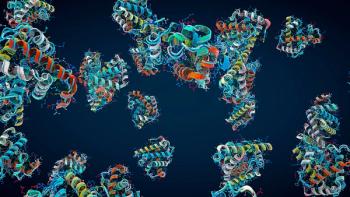
- BioPharm International-09-01-2011
- Volume 24
- Issue 9
Organizational Structures of Process Development and Manufacturing Support
How to strike a balance between site autonomy and global coordination.
The successful evolution of biotech companies has resulted in their expansion into complex multisite international structures. This transformation requires the establishment and coordination of various distributed functions, including manufacturing, manufacturing support (MS), and process development (PD). While such decentralization may offer some advantages, such as fast responses to local crises, use of local talent, cost reductions, and certain regulatory benefits, decentralization also poses significant organizational challenges. To address these challenges, companies have to find the right balance between site autonomy and functional centralization, so that the potential of each site is fully enabled, while a high level of coordination between sites is maintained. This article analyzes several structural alternatives for global PD organization, versions of which can be found in the biotech industry today. Two global structures that can potentially provide a practical solution for most cases will be proposed. These models are idealized, not reflecting any particular organization. Although this discussion focuses on PD, some of the solutions are fully applicable to MS. In the long term, the global PD and MS functions are unlikely to remain static. The evolution of every company requires periodic review and optimization of PD and MS, so that they adequately reflect the needs, size, and the maturity of the organization as it becomes a well-engineered global enterprise.
Konstantin Konstantinov
The authors discussed the PD organization structure issues with the management of multiple large biotech and biopharmaceutical companies involved in therapeutic protein manufacturing (1). The focus was on the following:
- Definition of responsibilities, in particular in the area of overlap between manufacturing and development
- Global structures of PD and MS
- Allocation of PD and MS functions in the global decentralized company
- Additional cross-functional means for enhancing coordination.
While all companies have their own structures, there are general concepts and patterns that are reproducible. Using the gathered information in combination with the authors' own experience, organizational models were developed that cover a broad spectrum of options spanning from complete decentralization to full centralization. These models do not represent the structure of any particular company, but capture the essence of the existing opportunities.
The existing structures are not static but continue to evolve, thus reflecting the progress and the specifics of each organization. Despite many differences, often resulting from the personal preference of top management, there is a clear trend towards global alignment.
Most companies have separate MS and PD functions. Furthermore, the MS groups are always colocated with the manufacturing departments they are supporting. Because this model is common and offers some important advantages, the authors considered it as a standard in the analysis. The advantages of this approach include speed of response to urgent manufacturing needs and shielding of PD from short-term daily problems in the plant, so that resources are focused on long-term strategic projects and innovation (2). In some cases, a central MS group is responsible for the coordination and standardization between the distributed MS networks.
Table I summarizes the responsibilities of the MS and PD groups. In this illustration, the MS groups serve as the first line of defense. Because speed is one of the main requirements, local presence, including on-the-floor support, is essential. MS focuses on the manufacturing processes at the particular site and is often a structural part of the manufacturing organization. It is responsible for the day-to-day issues, including deviation investigations, continuous improvement, process monitoring, data mining, and process transfer to the local site. Typically, MS is not involved in complex, exploratory, long-term projects. These projects are handled by PD, and developed in close coordination with MS and manufacturing.
Table I: Responsibilities of process development (PD) and manufacturing support (MS).
On the other hand, PD is responsible for larger life-cycle management projects, development and transfer of new processes, new technology platforms, and manufacturing support of complex projects requiring intense experimental and analytical work. The PD group can be centralized or decentralized, residing at several sites that provide remote services to various internal customers.
While a definition of the responsibilities of MS and PD is helpful, it is difficult to define a clear line between the two. Accepting a certain level of healthy overlap and ambiguity is practical, because this can serve as a bridge between the two functions, thus preventing dangerous gaps. The complexity of biotech manufacturing results in a continuum of projects, some of which cannot be clearly allocated to only MS or PD.
The coordination between MS and PD is a critical element of the biotech enterprise. Structurally, these groups exist as independent departments under different management. As such, it is essential that their activities, procedures, objectives, priorities, and methodology be aligned. This alignment can be achieved by properly designed business processes involving both organizations, including but not limited to joint teams, committees, periodic reviews, and symmetrical functional structures. Proper alignment allows for an optimal response to rapidly changing priorities, fluidity, coordinated resource allocation, and global utilization of knowledge generated at different locations.
PD ORGANIZATIONAL STRUCTURES
A PD structure that gives priority to site autonomy is shown in Figure 1. The assumption is that PD departments exist at various locations (Sites A, B, and C). One of the sites may play the role of a central or corporategroup. Another assumption is that each PD department is organized functionally into subgroups, including cell culture, purification, and formulation–fill–finish units. Not all functions may exist at any one site, however, this structure is considered for completeness. In some organizations, other functions can be part of PD (e.g., analytics, cell-line development, and pilot plant), but for simplicity, these are not included in Figure 1. Well-developed analytical function is a critical element of PD, and usually all PD departments have an analytical group that provides routine assay support. However, the location of the assay-development activity varies significantly from company to company.
Figure 1: Fully-decentralized process development (PD) structure. (ALL FIGURES ARE COURTESY OF THE AUTHORS)
According to this model, each PD group reports into the local site head, who reports to a corporate executive, fully empowering site autonomy. The line responsibility for the coordination and alignment between the PD groups from different sites is moved high up in the company hierarchy to the level of the corporate executive. Except for various teams and committees that can help the cross-site alignment, no formal links support global coordination. While this model facilitates speed and focus on site priorities, it does not adequately support global alignment and integration of the PD organization. This type of organization creates silos of PD resources and minimizes the opportunity for setting common priorities and flexible distribution of projects and resources.
The model in Figure 1 may work well when different sites use completely different technology platforms, which makes the need for harmonization less critical. However, usually the platform technologies are similar, particularly when one product is manufactured at multiple sites. In this circumstance, decentralization may create problems, such as incremental technological drift of sites away from each other in terms of procedures, methods, instrumentation, and development philosophy. When left unmonitored, this drift can be difficult and costly to reverse.
The second model (see Figure 2) shifts the balance towards centralization. Each PD group reports into a global PD head, who is responsible for all PD activities in the company. Site management still can have an administrative link to the local PD groups, usually achieved through dotted lines. The global PD head is responsible for the coordination and alignment between sites, which is an essential part of his or her role. The focus on integration is stronger, and the responsibility for it is shifted lower in the company hierarchy.
Figure 2: Site-focused process development (PD) integration. (ALL FIGURES ARE COURTESY OF THE AUTHORS)
The third model (see Figure 3) provides full functional alignment. The responsibility for coordination is moved to an even lower level. For example, all cell-culture PD departments at different sites report to a global cell-culture head. The other functions are integrated similarly. This model provides a high level of coordination, which is rooted deeper in the organization. Furthermore, it requires a symmetrical organization of all PD groups, which streamlines communication, responsibility, definition, and resource allocation. This model is generally appropriate for more mature organizations where all PD departments are already functionally structured.
Figure 3: Global functional alignment of process development (PD). (ALL FIGURES ARE COURTESY OF THE AUTHORS)
The fourth model (see Figure 4) represents a fully centralized PD organization that assumes colocation of all PD resources at one place. With the objective of maximizing coordination, some large companies have elected to concentrate all their development activities at a single site. Clearly, this structure defines the opposite end of the organizational spectrum compared with the fully decentralized model depicted in Figure 1.
Figure 4: Fully-centralized process development (PD) structure. (ALL FIGURES ARE COURTESY OF THE AUTHORS)
MS STRUCTURES
The MS models can be similar to these of PD, with the exception that the MS groups by definition are colocated with their corresponding manufacturing units. Therefore, the fully centralized model (see Figure 4) is not applicable. Although individual MS groups are ultimately focused on supporting their local manufacturing units, global coordination between them in terms of business processes, priorities, best practices, and instrumentation is essential. As such, the models in Figures 2 and 3 are appropriate, and their features apply fully to MS. Tight harmonization is particularly critical for multisite production of the same drug.
Tangible benefits should be associated with the symmetrical organization of PD and MS, which would enable simplified coordination and communication to better handle the typical push–pull dynamics between the two functions. It is easy to imagine and implement additional organizational tools that link PD and MS, including teams, committees, task forces, and a global project management function. These supporting elements are simpler to construct when the PD and MS organizations are compatible and structured the same way.
CONCLUSIONS
The dynamics of the biotechnology business imposes challenging demands on the individual sites and on the global multisite functions. Achieving a simultaneously high level of site autonomy while maintaining global coordination is a difficult task that requires proper organizational structure for PD and MS. However, these objectives are not mutually exclusive. The PD models outlined in Figures 2 and 3 provide a reasonable balance between the conflicting needs. These structures can incrementally evolve, reflecting the maturity of the entire organization. The proposed models also enable the smooth integration of newly acquired companies within the existing structures, without the negative effect of a complete reorganization or relocation of the new entities. Variations of the proposed models can be found in the biopharmaceutical industry today. In most real cases, however, the organizational structures are complicated by exceptions caused by historical or other reasons. Despite the model diversity, there is a clear trend towards globalization of the distributed PD function.
Missing the opportunity to strike a balance between site autonomy and global coordination entails a significant cost. If the PD groups are left disconnected, there will be a growing drift in direction, which will eventually result in inefficiencies, technology platform misalignments, and lost opportunities. The opposite is also true: overwhelming central control may stifle the creativity and innovation at individual sites. The organizational structure itself is an essential, but not sufficient, requirement for these models to work. Active management using the power of global reporting lines is necessary to promote common goals, priorities, learning, and standards.
Properly aligned global PD organizations have the following:
- Fast corporatewide distribution of best practices and technology platforms across the PD network
- Ability to globalize innovation sourced from different sites
- Flexible resource allocation, rapid responses to changing priorities
- Less internal competition
- Focus on external competition
- Improved efficiency through standardization of scale-down models, data- and knowledge- management systems, instrumentation, and business practices
- Minimized redundancy and common priorities
- Global PD management shifted to a lower level in the hierarchy.
In addition to the right organization of PD, a symmetrical structure of MS can provide additional benefits, making a step forward to the truly agile, ambidextrous enterprise capable of optimal management of short-term urgent projects, incremental improvement, and disruptive innovation (2, 3).
ACKNOWLEDGMENTS
The authors appreciate the open discussion with the management of several leading biopharmaceutical companies. The support of Dr. Eliana Clark of Genzyme is acknowledged with gratitude.
Konstantin Konstantinov* is vice-president of commercial process development and Steve Sofen is vice-president of project management, both at Genzyme.
REFERENCES
1. K. Konstantinov et. al., presentation at the IBC Bioprocess International Conference (Anaheim, CA 2008).
2. M. Tushman and C. O'Reilly, Winning Through Innovation, (Harvard Business School Press, 1997).
3. C. Christensen, The Innovator's Dilemma, (Harper Business, 2000).
Articles in this issue
over 14 years ago
BioPharm International, September 2011 Issue (PDF)over 14 years ago
Manufacturers and FDA Gear Up for User-Fee Actionover 14 years ago
The Future of Downstream Processingover 14 years ago
Following Our Own Instructionsover 14 years ago
Technologies for Downstream Processingover 14 years ago
Retrospection and Introspection at FDAover 14 years ago
The EU Debt Crisis and CMOsover 14 years ago
Advocating for Biosimilar Approval Standards Under BPCINewsletter
Stay at the forefront of biopharmaceutical innovation—subscribe to BioPharm International for expert insights on drug development, manufacturing, compliance, and more.




